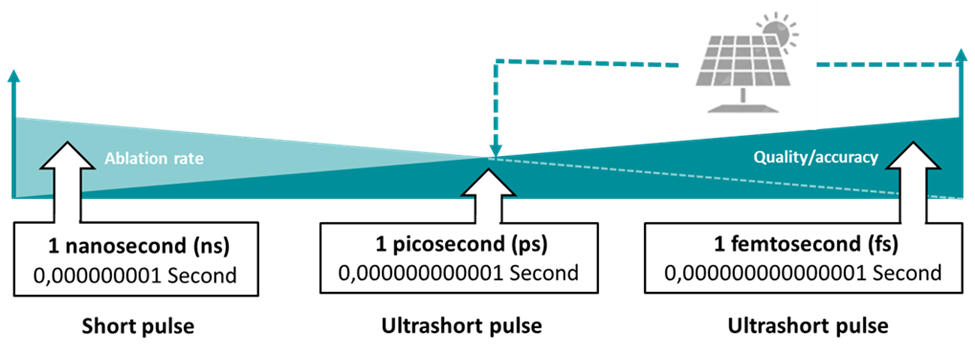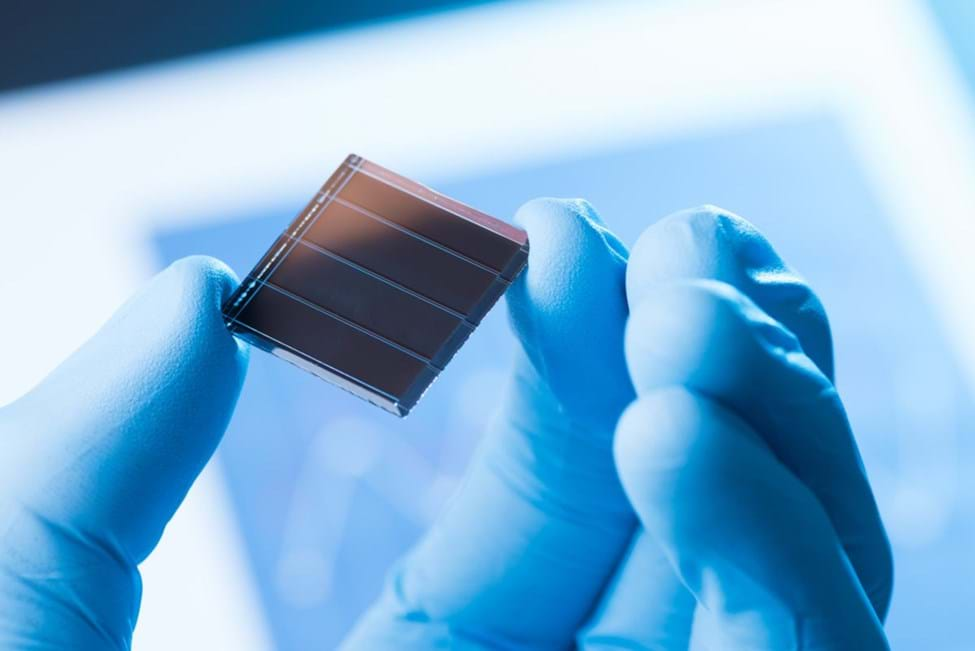Femtosecond Lasers for sustainable energy
On: Jul 06, 2023
In: Ultrafast Lasers
Laser ablation occurs when high intensity, ultrashort pulses of light interact with matter. A well-known method used for solar cell manufacturing.
There are two main types of solar cells, crystalline silicon, and thin films. Both require precise cutting into small pieces. The use of femtosecond lasers in the manufacturing of solar cells has become increasingly popular due to their ability to create precise and clean cuts with minimal damage. This article discusses the role of femtosecond lasers in many different applications of solar cell manufacturing.

Ultrashort pulse lasers emit pulses of light lasting from a few tens of femtoseconds to about 1 picosecond. To give an idea, in one second the light has time to circle the earth seven times. In a femtosecond, light travels less than the thickness of a hair. Here are some of the specific roles that femtosecond lasers play in solar cell manufacturing:
Wafer dicing: Femtosecond lasers are used to cut silicon wafers into smaller pieces, which can then be used to make individual solar cells. The short pulse duration of the laser minimizes the amount of heat generated during the cutting process. As a result, there is less thermal damage to the wafer and a reduced risk of microcracks.
In addition, femtosecond lasers can be used to slice material into extremely thin pieces (as thin as a few microns) with high accuracy. This is important for the manufacture of thin-film solar cells, which require very thin layers of semiconductor material. The ability to create precise cuts also reduces the amount of wasted material, which helps to reduce costs.
Surface texturing: Femtosecond lasers can create extremely precise patterns on the surface of solar cells, which helps to trap more light and improves the cell's efficiency. Because the pulses are so short, the laser creates very fine structures with high accuracy.
Moreover, surface texturing is an environmentally friendly technique because no chemicals or toxic waste are added, it can process nearly all types of materials. It has been used to change the surface texture of materials on a micro or even nanometric scale, to meet a specific functional requirement.
Doping: Femtosecond lasers can be used to selectively dope certain areas of a solar cell with impurities. The short pulse duration allows for very precise control of the doping process, which improve the efficiency of the solar cell. The laser is focused on a specific area of the material, which causes the material to melt and mix with a dopant material, creating a doped region.
Overall, selectively doping certain areas of a solar cell improve the cell's performance by creating regions with different electrical properties that can better capture and transport charge carriers.
Contact formation: Femtosecond lasers can be used to create tiny holes or vias in the back of a solar cell, which allows for better electrical contact between the metal and the underlying semiconductor material. By placing contacts on the back side of the cell, there is less shading on the front of the cell, which allows for more light to be absorbed and converted into electrical energy.
Contact formation and back-contact solar cell fabrication are important techniques for improving the efficiency of solar cells and increasing the amount of renewable energy that can be generated from them.

Femtosecond lasers are a valuable tool for solar cell manufacturing. The ultrashort pulse duration of the laser minimizes the amount of heat generated during the cutting process, reducing the risk of thermal damage and microcracks. The versatility of femtosecond lasers makes it possible to cut various sizes and thicknesses of different materials.
All these benefits of using femtosecond lasers make it an essential technology for optimizing the quality and efficiency of solar cell production, while reducing costs and increasing yield. As the demand for solar cells continues to grow, femtosecond lasers will become increasingly important in the manufacture of these products and contribute to sustainable energy.
TeraXion is proud to manufacture components for femtosecond lasers and thus be an important player in sustainable energy.
